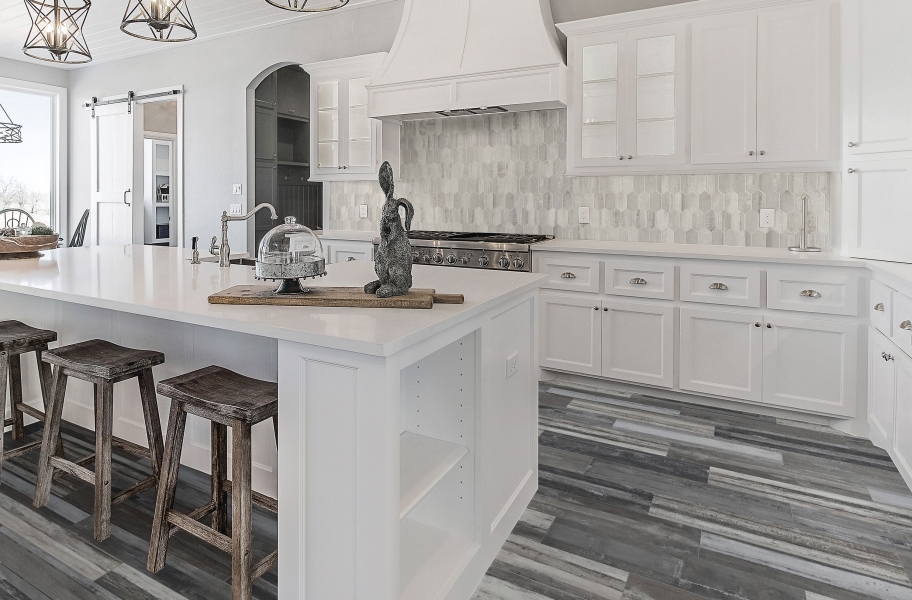Everyone has an idea of what they’d like their dream kitchen to look like. For some, a dream kitchen may be one that is grand and luxurious, with marble benchtops, high-end fixtures, and fancy pendant lighting. For others, the ideal kitchen is one that is simple, humble, and fuss-free.
Regardless of which team you’re on, one thing remains the same — a kitchen needs to be functional in its design in order to not just look good, but also be as practical as possible.
Today, we look at 5 top tips that will help you prioritise functionality in your kitchen design, so read on to find out more!
1. Appliances Make Or Break A Kitchen
This may be an unpopular opinion, but we’re going to say it anyway — kitchens are meant for cooking, and nothing else. Sure, a grand or stylish kitchen aesthetic can be an amazing addition to your home, but the bottom line is that a kitchen needs to offer practicality beyond anything else.
This is why the appliances that you choose can really make or break your kitchen. Ideally, a functional kitchen is equipped with various high quality tools and appliances that will last you a lifetime. This means investing in a quality set of knives, cutting boards, blenders, food processors, hand mixers, and anything else that you may need to prepare healthy and delicious meals each and everyday, with minimal to zero fuss involved.
2. Storage, Storage, Storage
If you’ve ever lived in a small apartment, you’ll know how limited kitchen storage space can be. Without adequate storage, a kitchen can go from looking classy to chaotic in a matter of minutes, and may even cause you anxiety that prevents you from wanting to enter the room, let alone cook.
This is why maximising the amount of storage space is so essential and should be considered when you are in the preliminary phase of your kitchen design process. As there are so many things to store — from kitchenware and dining ware to appliances and pantry items, ensuring that you have ample space to house everything you need is key. Some smart storage solutions include magnetic wall racks, pull out pantries, built-in shelving, and a variety of other storage hacks that will be sure to totally transform your kitchen.
3. Lighting 101
Lighting is one of the most important aspects of a well-designed kitchen as it maximises visibility in your working areas which is incredibly important in a general sense, but especially so when you are handling dangerous items such as knives, box graters, mandolins, hot pans, and sizzling dishes.
The last thing you want is for an unfortunate (and preventable) accident from occurring, which is why ensuring that you light your kitchen up should be a top priority. Downlights are a great option that can help illuminate work tops for food preparation, whereas under cabinet lighting can assist in brightening up dark spots within the kitchen.
PS: It is also a good idea to choose bulbs with crisp, bright white light, as this type of lighting is most appropriate for task lighting.
4. Layout Is Key
One of the most important factors that will determine how functional your kitchen is, is its layout. Kitchen layouts come in a myriad of varieties – from L-shaped kitchens to U-shaped kitchens, square kitchens with a central kitchen island, and even one-wall kitchens if you live in a small apartment or townhouse. Regardless of what shape your kitchen comes in, ensuring that you prioritise your layout to maximise functionality is key. If you have the luxury of renovating or building a brand new kitchen from scratch, we highly recommend looking at your options before settling on one particular kitchen style. What may be perfect for someone else’s family or lifestyle may not be ideal for your own, so exploring various options before making your final decision is always encouraged.
5. Fabulous Flooring
Last but not least, no article about kitchen functionality would be complete without dedicating a whole paragraph to kitchen flooring. Kitchen flooring is one aspect of the kitchen that shouldn’t be taken for granted, simply because poor flooring can compromise the safety of the entire household. Remember — a kitchen is where you wash dishes, deal with hot pans, liquids and ingredients, which is why slipping and falling should be one hazard that you’re committed to preventing.

Vinyl, tile, hybrid, timber, and laminate floorings are usually recommended for the kitchen space as they are durable, non-slip and of course, pleasant on the eyes. Oh, and please, for the love of the design gods — don’t even bother with carpet!
As far as kitchen design is concerned, you want your space to be visually appealing but also highly functional at the same time. We hope that this article has given you some inspiration on how you can go about designing your dream kitchen that doesn’t just look amazing, but is also a safe and practical environment for you to cook, bake, and spend time with loved ones.






